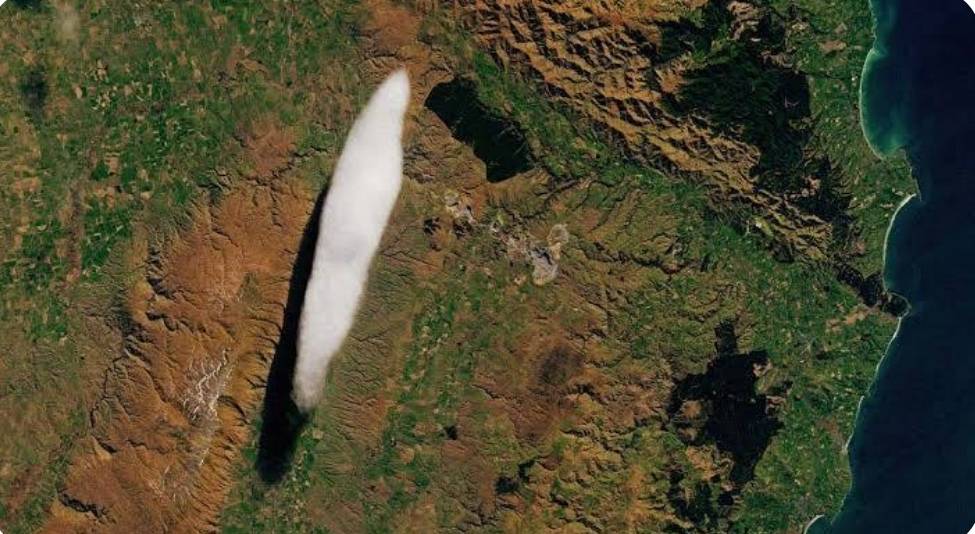NASA Satellite Inspects Mysterious Cloud Formation.
NASA’s Earth-observing satellites have recently turned their attention to an unusual cloud formation that has puzzled meteorologists and scientists alike. This peculiar cloud consistently appears in the same location, prompting inquiries about its origins, behavior, and potential implications for the environment.
The cloud, described as a distinct, swirling mass, typically forms over the South Pacific Ocean, near the coast of Peru. Its striking appearance and consistency have made it a prime target for satellite observation. Using advanced imaging technologies, NASA's satellites are capable of capturing detailed images and data on atmospheric conditions, enabling researchers to analyze the cloud's properties over time.
Scientists have identified this cloud as a type of stratocumulus cloud, characterized by its low, horizontal layers that can cover extensive areas. However, what sets this particular formation apart is its tendency to reappear in the same geographical area. This phenomenon has raised questions about the environmental factors contributing to its formation.
One hypothesis is that the cloud is influenced by ocean currents and upwelling in the region. The Pacific Ocean's Humboldt Current, which brings cold, nutrient-rich waters to the surface, could be playing a significant role in creating the necessary conditions for cloud formation. As warm, moist air from the ocean rises and meets the cooler air above, it creates the perfect environment for stratocumulus clouds to develop. The consistent presence of this cloud may indicate a stable interaction between the ocean and atmosphere.
Researchers have also considered the impact of climate change on this cloud's behavior. As global temperatures rise, the dynamics of ocean currents and atmospheric conditions are expected to shift, potentially altering cloud formation patterns. Monitoring this particular cloud could provide insights into how climate change is affecting weather systems and atmospheric phenomena.
The satellite data reveals not only the cloud's structure but also its effects on local weather patterns. The cloud has been observed to influence temperatures and precipitation in the surrounding areas, acting as a barrier that can trap heat or, conversely, reflect sunlight back into space. This dual role could have significant implications for the region’s climate and ecosystem.
Furthermore, the cloud serves as a valuable case study for understanding similar formations around the globe. By examining its characteristics and behavior, scientists can draw parallels with other recurring cloud formations, aiding in the development of more accurate climate models.
As NASA continues its observations, researchers are eager to unlock the mysteries surrounding this strange cloud. The data collected will not only enhance our understanding of local weather dynamics but also contribute to broader climate science efforts. With ongoing satellite missions, scientists hope to gain deeper insights into how such formations can influence global weather patterns and climate variability.
In conclusion, the investigation of this enigmatic cloud formation highlights the importance of satellite technology in advancing our understanding of Earth’s atmosphere. By examining clouds that consistently form in the same location, scientists can gather critical data that may help predict future climatic changes and inform global climate strategies. As we face the challenges of a changing climate, such research becomes ever more crucial for protecting our planet and its ecosystems.


